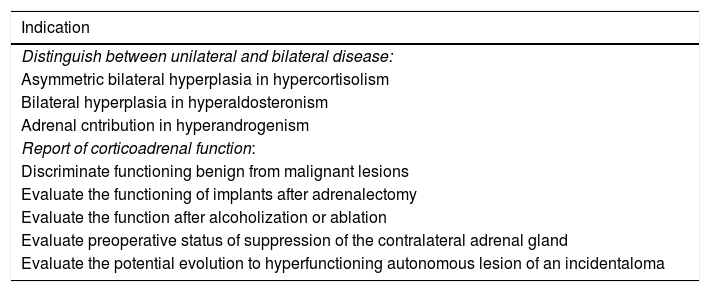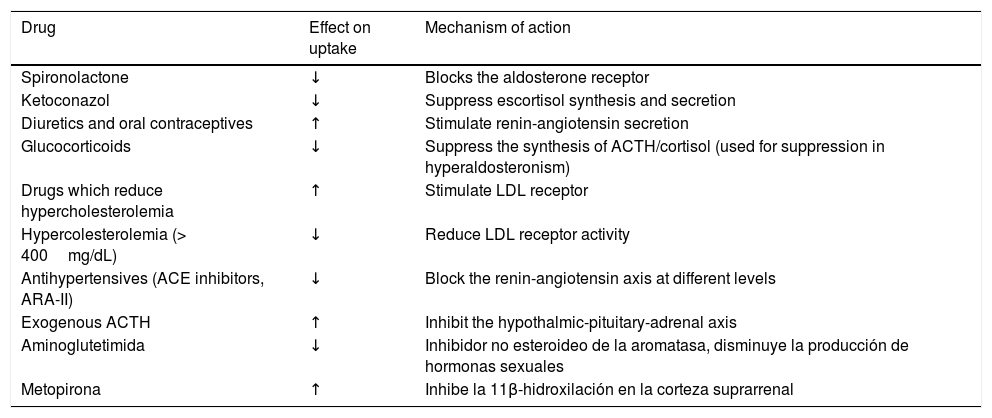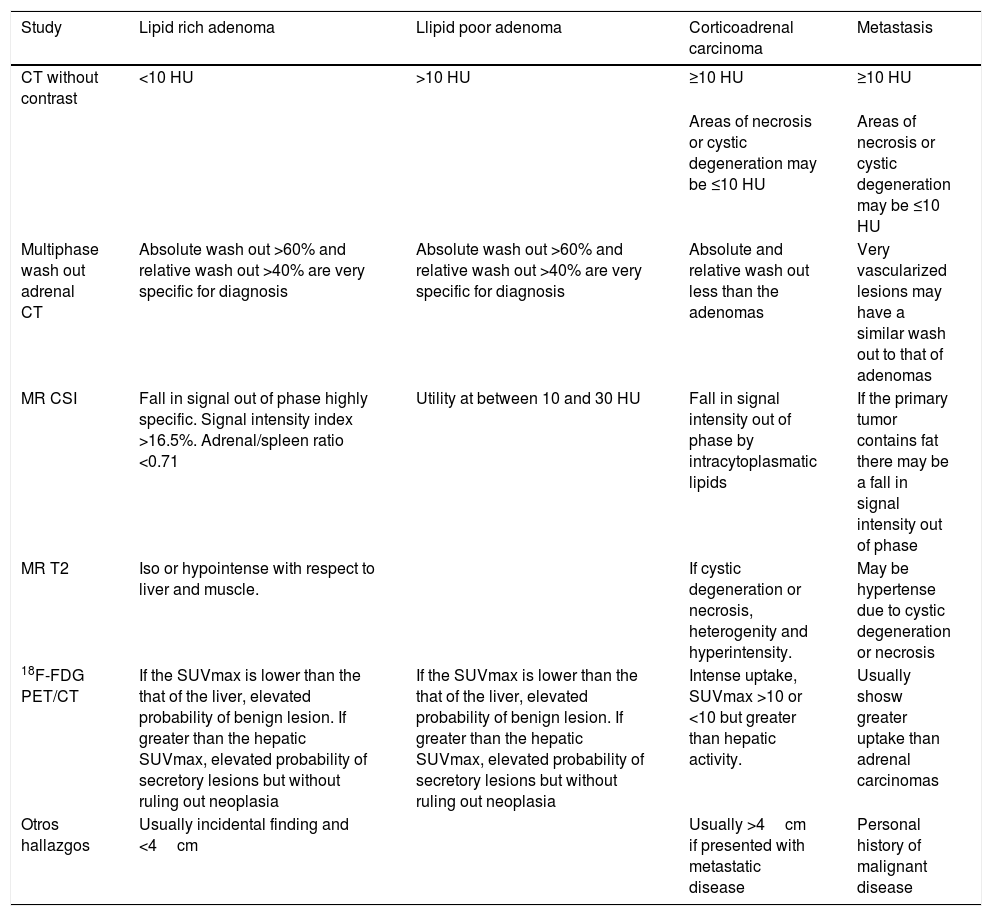The rising number of high-resolution imaging scans has increased the adrenal lesions detection, which require a differential diagnosis. Currently, the most commonly used scans are CT and MRI, but these are sometimes not very specific. In these cases, nuclear medicine scans with [131I]I-norcolesterol, [11C] C-metomidate and [18F] fludeoxyglucose help to differentiate benign vs. malignant lesions, to lateralize the involvement in hypersecretion disease, as well as to guide the therapeutic strategy in both unilateral and bilateral lesions.
El aumento en el número de exploraciones de imagen de alta resolución ha incrementado la detección de lesiones adrenales, que precisan un diagnóstico diferencial. En la actualidad las exploraciones más utilizadas son la TC y la RM, pero estas en ocasiones son poco específicas, por lo que las exploraciones de medicina nuclear con [131I]I-norcolesterol, [11C]C-metomidato y [18F]fludeoxiglucosa ayudan a diferenciar entre benignidad y malignidad, a lateralizar la afectación en caso de hipersecreción, y a orientar la estrategia terapéutica tanto en las lesiones unilaterales como bilaterales.
Article
If you experience access problems, you can contact the SEMNIM Technical Secretariat by email at secretaria.tecnica@semnim.es or by phone at +34 619 594 780.

Revista Española de Medicina Nuclear e Imagen Molecular (English Edition)
















